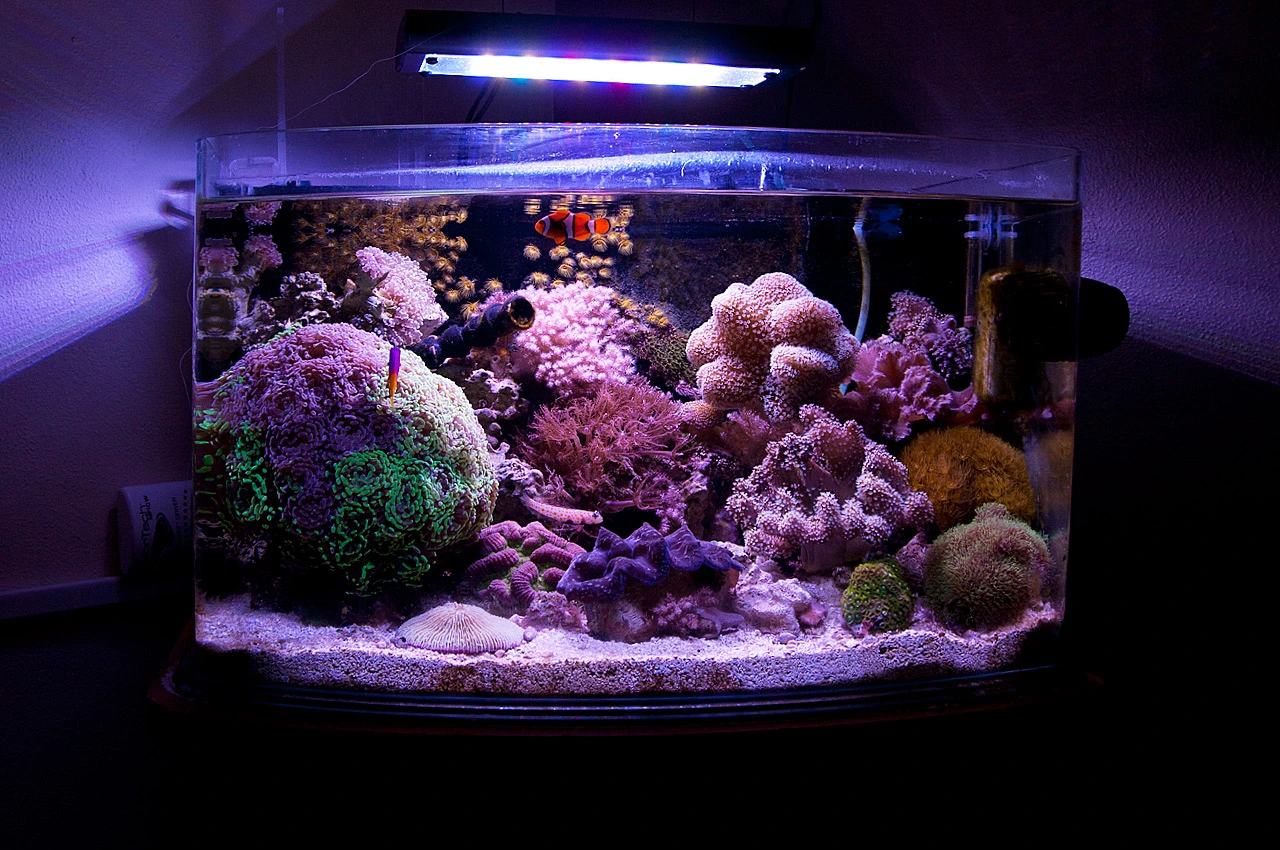Stunning 25-Gallon Reef Tank – uwwmatt's TOTM | NanoReef

Tank Specifications
Volume: 25 Gallons / 94 Liters
Dimensions (L × W × H):
23.6" ×
17.7" ×
11.8"
60.0cm ×
45.0cm ×
30.0cm
Equipment List
- Salt: Instant Ocean
Frequently Asked Questions
What type of lighting should I use for a nano reef tank?
For a nano reef tank, you can use LED lighting similar to the Nanobox 24 LED unit. It's effective for coral growth and energy efficient. Ensure to provide a light cycle of about 10 hours with an additional hour for dawn and dusk to simulate natural conditions.
How do I set up an AIO (All-In-One) tank?
When setting up an AIO tank, begin by cleaning the tank thoroughly before adding water. Use filter media such as carbon and filter floss, and ensure the return pump is set up correctly to maintain circulation. Organize your aquarium equipment so it's tidy and hidden where possible, as mentioned in the blog.
What is a good maintenance routine for a reef tank?
A solid maintenance routine for a reef tank includes: 1) Feeding every other day while turning off pumps for 30 minutes during feeding, 2) Weekly water changes of about 5 gallons along with glass cleaning and detritus removal using a turkey baster, and 3) Monthly tasks like replacing filter media and testing equipment.
How often should I do water changes?
It is recommended to perform water changes weekly, with a volume of about 10-20% of your tank's total water volume, which in this case is about 5 gallons for a 25-gallon tank. This will help maintain water quality and keep nutrient levels in check.
What types of food should I feed my reef tank?
A variety of foods is beneficial. Frozen and dried foods are great choices for a reef tank. Make sure to choose options that are appropriate for the types of fish and corals you have. For example, feed your fish pellets, flakes, and frozen food rich in vitamins.
Should I dose anything in my reef tank?
After each water change, it is beneficial to dose live nitrifying bacteria and a water clarifier like Kent Pro-Clear, as it helps to maintain beneficial bacteria and clear up water clarity.
How do I maintain proper water quality in my reef tank?
To maintain proper water quality, regularly perform water changes, monitor salinity (aim for a specific gravity of 1.025), and ensure that temperature remains stable (approximately 78.5°F). Regularly clean filter media and remove any detritus build-up.
Do I need to test my water regularly?
While it’s not stated as a routine practice, owning a set of test kits is advisable. Testing water parameters such as ammonia, nitrite, nitrate, and salinity can help ensure that your tank is healthy. Aim to incorporate regular testing into your schedule to catch any issues early.